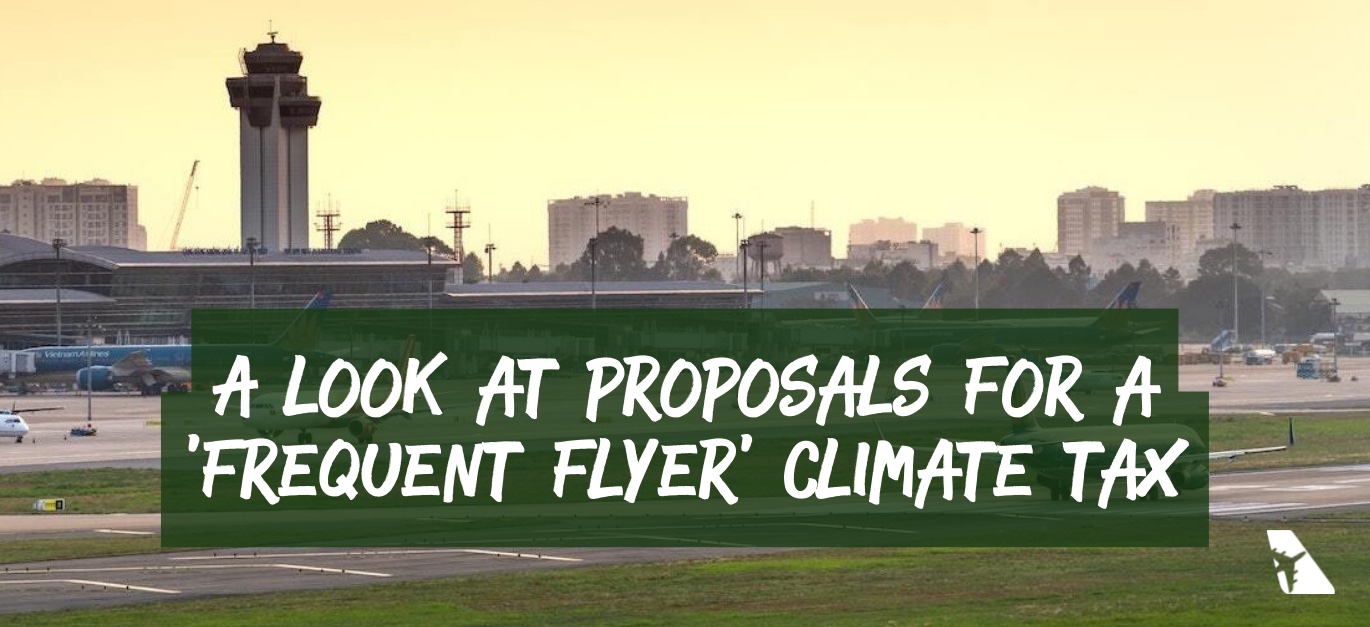ARTICLE
Holly Boyd-Boland, VP Corporate Development & Sustainab ...

Over the Autumn, the International Council for Clean Transportation (ICCT) published a proposal for a global frequent flyer levy. The authors of the report are Dan Rutherford (a previous guest on Sustainability in the Air) and Xinyi Sola Zheng.
It’s available to download here, but we’ll give our thoughts on it.
The arguments for some kind of air miles or frequent flyer tax are well known.
The idea behind it is that a minority of people in better off demographics take the majority of flights. And so as they account for a higher share of aviation emissions, they should pay more.
There are a number of proposals for a frequent flyer levy, and on the scale of them, the ICCT’s ideas are relatively moderate. There are no calls to ban frequent flyer programmes, or even airline advertising, as is the case by many activist groups.
Instead the suggestion is to shift the Air Passenger Duty (APD), which applies to everyone across the board to a levy, where a passenger pays more the more s/he flies. That money would then be used to finance industry decarbonisation.
The first flight would be free, and under the ICCT’s proposals, the second would come out at $9. As a result, for most people who flew over the weekend for the US Thanksgiving holiday, the impact would be minimal. The ICCT then proposes that this goes up to $177 for a passenger’s twentieth flight that year. Again, for many people taking twenty flights, that cost would be manageable.
It’s a serious proposal that unlike many other similar suggestions isn’t intrinsically hostile to the industry, and it should be engaged with.
There are of course practical considerations. The recent white paper, “Sustainable Tourism’s Achilles’ Heel: Aviation Emissions”, by Chris Lyle, looks at a number of aviation climate impact strategies including ‘demand management.’
As Chris Lyle says, there would be potential for ‘leakage’, for example the purchase of onward travel in a neighbouring country that does not subscribe to such a scheme.
However, our main comment is that the proposal does not incentivise less carbon intensive flying. Let’s take a hypothetical example of someone who in 2030 flies every week for work between Toronto and Philadelphia.

That’s one of the routes Connect Airlines is looking to serve. It intends to start hydrogen-electric flights in the Northeast of the US and Canada using ATR72 aircraft with Universal Hydrogen retrofitted engines.
But under a frequent flyer climate levy, someone taking one of those flights every week would pay the same levy as someone in an older generation 737, even though the climate impact is vastly different.
As a result, our preference would be for any charge to take this into account. Perhaps a modified version of the European ETS scheme (which only covers European flights), but with more incentives for low or no emissions aircraft.
We’d also like it to include some form of carbon labelling, so the consumer can make an informed choice.
The evidence is that many consumers want to do the right thing in terms of environmental choices, but especially when it comes to aviation don’t know how. A simple to understand labelling scheme, combined with financial reasons to choose low carbon flights, would help in that regard and would incentivise both airlines and the travelling public. The idea of producing the kind of label you see on the side of washing machines for flights is in fact under consideration by EASA.
Then, for the highest polluting options, some kind of sliding scale climate levy as proposed by the ICCT could be worth considering.
More aviation-specific sustainability updates and analysis can be found in our twice-weekly Sustainability In The Air newsletter, led by SimpliFlying’s Research Director Dirk Singer. Do subscribe to our send-out to stay on top of the latest trends.
© 2022 SimpliFlying Pte. Ltd.